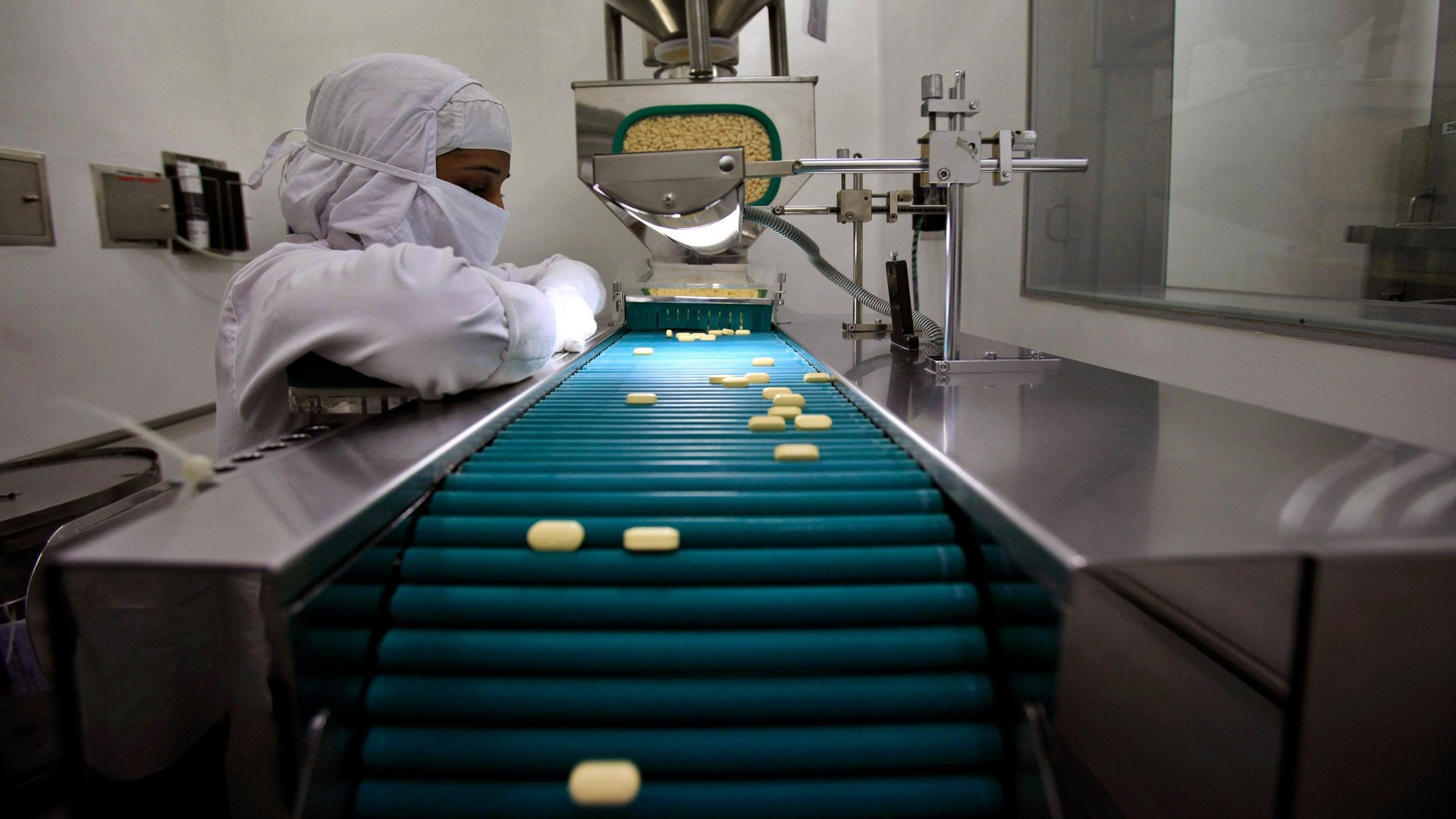India’s $10 billion pipeline of generic cures will keep rolling—for now
India is the world’s largest maker of generic pharmaceuticals, exporting some $10 billion-worth a year. Often, they’re copied from the branded treatments invented by Western corporations. Today the country’s highest court rejected an effort by one of those companies, Novartis, to staunch the flow.


India is the world’s largest maker of generic pharmaceuticals, exporting some $10 billion-worth a year. Often, they’re copied from the branded treatments invented by Western corporations. Today the country’s highest court rejected an effort by one of those companies, Novartis, to staunch the flow.
The Swiss pharmaceutical company was denied a request for patent protection of Gleevec, its successful anti-cancer drug that can cost $70,000 a year. Indian companies were producing versions that cost $2,500 a year. The court ruled that they can continued to do so because Gleevec hasn’t materially changed since it was first invented in 1993. India’s law on drug patents, passed in 2005, doesn’t apply to drugs discovered before 1995.
The decision is a win for the generic makers—and the poor, sick people in developing countries who depend on them—in the near-term. The longer-term consequences are much harder to pin down, for various reasons:
- The decision is part of a global macroeconomic struggle. The increasingly post-industrial economies in the West desperately need their ideas—for medicine, software and entertainment—to be more valuable on global markets. They have pressured emerging markets to take intellectual property (IP) protections more seriously—which is why India’s drug patent law is only eight years old. But sick citizens in developing countries and their advocates want to make sure they can get life-saving treatments that are be cheap to manufacture without paying the IP premium. And there’s another catch—India and China, two targets of these campaigns, produce 80% of the ingredients used in US drugs.
- Pharma companies say rulings like this one will hurt innovation. Without the temporary guaranteed monopoly provided by patents, big drugmakers like Novartis, Pfizer and Roche with interests in India worry that they won’t be able to fund large research projects. But even in Western countries, some are asking whether intellectual property rules are helping innovation or hindering it. Of late, much of the innovation coming from drug companies has been focused on extending patent protection on key drugs to avoid generic competitors. And high prices on name-brand treatments are one of the reasons health care is so much more expensive in the US than other countries.
- What happens with the next miracle drug? The real test, after this decision, will come when a foreign pharma company tries to patent a new drug in India, not attempt to protect an existing franchise. If the Indian government grants a patent, it won’t just affect Indians, but patients around the world who depend on Indian generics. But if it doesn’t protect the new drug and lets Indian firms make generic equivalents, it could be a signal to pharma companies that they won’t see many sales in emerging markets, and prompt them to reduce investments in research even further.
Of course, global patent protection is a two-way street. India has been working to stop foreign yoga gurus from profiting from the country’s traditions, releasing a list of 1,300 poses that it has documented as prior art.